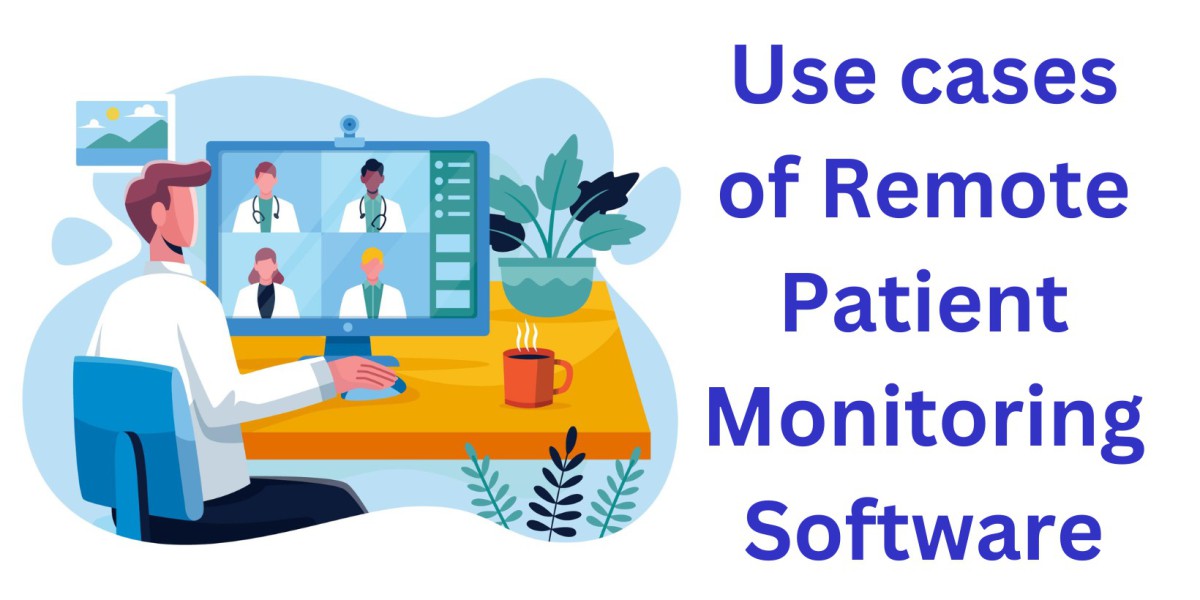Remote Patient Monitoring (RPM) software has become an essential tool in modern healthcare, providing various solutions for tracking patient health remotely. This technology offers numerous applications, from managing chronic diseases to enhancing post-operative care. In this blog, we’ll explore the diverse use cases of RPM software, highlighting how it benefits patients and healthcare providers alike.
Understanding Remote Patient Monitoring Software
Remote Patient Monitoring software is designed to collect, transmit, and analyze health data from patients outside of traditional healthcare settings. This software integrates with various devices and applications to provide continuous health monitoring, facilitating timely interventions and personalized care.
How RPM Software Works
RPM software typically involves several key components:
- Data Collection: Health data is gathered through devices such as blood pressure monitors, glucose meters, and wearable fitness trackers.
- Data Transmission: The collected data is sent securely to healthcare providers through cloud-based systems or other digital channels.
- Data Analysis: Healthcare providers analyze the data to monitor patient health trends, detect anomalies, and make informed decisions about treatment.
Use Cases of Remote Patient Monitoring Software
1. Chronic Disease Management
Diabetes Management
RPM software plays a crucial role in managing diabetes by continuously monitoring blood glucose levels. Patients use glucose meters that sync with the software to provide real-time data. Healthcare providers can review this data to adjust insulin doses, track the effectiveness of treatments, and provide guidance on diet and lifestyle changes.
Hypertension Monitoring
For patients with hypertension, RPM software enables regular monitoring of blood pressure readings. Patients use home blood pressure cuffs that connect to the software, allowing healthcare providers to track changes in blood pressure over time. This helps in managing medications, identifying potential complications, and preventing hypertensive crises.
Heart Disease Management
RPM software is valuable for managing heart diseases, such as heart failure or arrhythmias. Patients can use devices to monitor vital signs like heart rate, ECG, and weight. The software alerts healthcare providers to any concerning changes, facilitating early intervention and ongoing management of the condition.
2. Post-Operative Care
Surgical Recovery
After surgery, RPM software helps monitor patients’ recovery progress. Patients can use devices to track vital signs, wound healing, and other recovery metrics. This data helps healthcare providers assess recovery, detect potential complications early, and adjust post-operative care plans as needed.
Medication Adherence
RPM software can also track medication adherence by integrating with smart pill dispensers or reminder systems. This helps ensure that patients take their medications as prescribed, reducing the risk of complications and improving overall recovery.
3. Preventive Health and Wellness
Weight Management
For individuals looking to manage their weight, RPM software provides tools for tracking weight, activity levels, and dietary intake. Patients can use smart scales and fitness trackers to monitor their progress, while healthcare providers offer personalized advice and support based on the data collected.
Fitness Tracking
RPM software is often used for general fitness and wellness. By integrating with wearable devices, it tracks physical activity, heart rate, and sleep patterns. This data helps users set fitness goals, monitor progress, and make informed decisions about their health and wellness routines.
4. Remote Monitoring for Elderly Care
Fall Detection
For elderly individuals, RPM software can integrate with fall detection sensors that alert caregivers or family members if a fall occurs. This timely notification is crucial for providing immediate assistance and preventing further injury.
Chronic Condition Management
Elderly patients often have multiple chronic conditions. RPM software helps manage these by providing regular monitoring and communication with healthcare providers. This ensures that conditions are well-managed and that any issues are addressed promptly.
5. Maternal and Pediatric Health
Pregnancy Monitoring
RPM software is used to monitor pregnant women’s health and the development of their babies. Devices track vital signs, fetal heart rate, and other parameters. Healthcare providers can use this data to monitor the health of both the mother and the fetus, ensuring a healthy pregnancy.
Pediatric Monitoring
For children with chronic conditions or those requiring ongoing observation, RPM software provides a way to track health data without frequent visits to the doctor’s office. This includes monitoring growth parameters, medication adherence, and overall well-being.
6. Behavioral Health
Mental Health Monitoring
RPM software can be used to monitor mental health conditions by tracking mood, sleep patterns, and other behavioral indicators. Patients can use apps or devices to report their mental state, and healthcare providers can use this information to offer timely support and interventions.
Substance Abuse Management
For individuals in recovery from substance abuse, RPM software can track progress and provide support through remote counseling sessions, medication reminders, and progress reports. This continuous monitoring helps ensure adherence to treatment plans and supports long-term recovery.
Benefits of Remote Patient Monitoring Software
Enhanced Patient Engagement
RPM software encourages patients to take an active role in their health management. By providing real-time feedback and monitoring, patients become more engaged in their care, leading to better health outcomes and adherence to treatment plans.
Improved Health Outcomes
With continuous monitoring and timely interventions, RPM software helps prevent complications and manage chronic conditions more effectively. This proactive approach can lead to improved health outcomes and reduced hospitalizations.
Increased Efficiency for Healthcare Providers
Healthcare providers benefit from RPM software by gaining access to real-time data without needing to see patients in person. This improves efficiency, allows for better resource allocation, and helps providers focus on patients who need immediate attention.
Reduced Healthcare Costs
By minimizing the need for in-person visits and hospitalizations, RPM software can reduce overall healthcare costs. It allows for better management of chronic conditions, which can prevent costly complications and emergency situations.
Challenges and Considerations
Data Security and Privacy
Ensuring the security and privacy of patient data is a critical concern for RPM software. Healthcare providers and software developers must implement robust encryption and security measures to protect sensitive health information from breaches.
Device Integration
Integrating various health monitoring devices with RPM software can be complex. Ensuring compatibility and seamless data synchronization is essential for effective monitoring and accurate data analysis.
Patient Adoption
Not all patients may be comfortable using RPM technology. Ensuring that patients are adequately trained and motivated to use the technology is important for successful implementation.
Regulatory Compliance
RPM software must comply with regulations related to data privacy, such as HIPAA in the United States. Ensuring that the software meets these regulatory requirements is essential for legal and ethical reasons.
The Future of Remote Patient Monitoring Software
As technology continues to advance, the future of RPM software looks promising. Innovations such as artificial intelligence, advanced wearables, and integrated telehealth solutions are expected to enhance the capabilities of RPM systems. These developments will likely lead to even more effective remote health management and improved patient care.
Conclusion
Remote Patient Monitoring software is transforming the healthcare landscape by providing a range of applications for chronic disease management, post-operative care, preventive health, elderly care, maternal and pediatric health, and behavioral health. The benefits of RPM software include enhanced patient engagement, improved health outcomes, increased efficiency for healthcare providers, and reduced healthcare costs.
The role of remote patient monitoring software development is crucial in advancing this technology, ensuring that solutions are effective, secure, and user-friendly. As the field continues to evolve, RPM software will play an increasingly vital role in delivering personalized, proactive healthcare.


